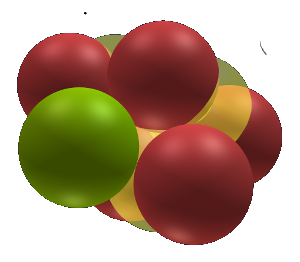What are Protons, Neutrons and Electrons in the SAM?
The protons and electrons as they are depicted in this model are each others "opposite" they are a duality.
Are the protons and electrons a composite / structure of something smaller? does this adhere to geometrical rules also? Are matter and energy interchangeable as Quantum Mechanics suggests?
These are valid questions but stand on their own. The SAM starts at the point whereby these are recognized as being a particle. However this does not mean this model adheres to a particular standpoint.
We would invite anyone that has a substantial and solid scientific view on this matter to contribute to this topic. It is beyond the scope of the structuring of the Atom at this point. Improvement or adjustments to the SAM would follow given enough evidence of the need to. the SAM is therefore subject to possible changes as all proper scientific models should be!
Encyclopaedia Britannica - https://www.britannica.com/
Proton
(Encyclopaedia Britannica) Proton, stable subatomic particle that has a positive charge equal in magnitude to a unit of electron charge and a rest mass of 1.67262 × 10−27 kg, which is 1,836 times the mass of an electron.
SAM - Whenever the term "proton" is used, its standard definition is simply that, A positive particle part of the duality with the electron.
Electron
(Encyclopaedia Britannica) Electron, lightest stable subatomic particle known. It carries a negative charge, which is considered the basic unit of electric charge. The rest mass of the electron is 9.10938356 × 10−31 kg, which is only 1/1,836the mass of a proton. An electron is therefore considered nearly massless in comparison with a proton or a neutron, and the electron mass is not included in calculating the mass number of an atom.
SAM - Whenever the term "electron" is used, its standard definition is a negative part of the duality with the proton. There are 2 'states' an electron can be in, An "inner electron" state and an "outer electron" state. The outer electron is what is know to be the "orbital" electron that takes part in chemistry. The inner electron is essentially equated with the "neutron". The neutron as Quantum Mechanics defines is not used here.
Neutron
(Encyclopaedia Britannica) Neutron, neutral subatomic particle that is a constituent of every atomic nucleus except ordinary hydrogen. It has no electric charge and a rest mass equal to 1.67493 × 10−27 kg—marginally greater than that of the proton but nearly 1,839 times greater than that of the electron.
SAM - Whenever the term "neutron" is used, the reader should understand that it (the neutron) is a proton electron pair. An extra neutron is one proton and one electron that is added extra to the nucleus. The electron is needed to keep the proton attached. The neutron in the nucleus when part of the essential atomic structure (not the extra neutrons) it (the neutron) is essentially a connection of an inner electron with 2 neighboring protons forming essentially a Deuterium.
Nucleon
Nucleon, either of the subatomic particles, the proton and the neutron, constituting atomic nuclei.
- Log in to post comments
